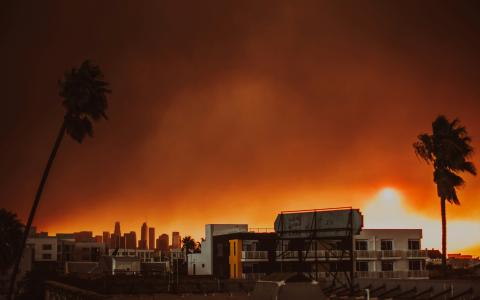
As smoke billows over the exclusive Pacific Palisades neighborhood of Los Angeles, wealth advisors nationwide are taking note.
This latest wildfire isn't just threatening multi-million dollar properties – it's highlighting the urgent need for disaster-resilient investment strategies. Smart money is moving into targeted ETF positions that could benefit from both the immediate crisis and long-term climate risk trends.
Insurance sector ETFs are leading the charge. The SPDR S&P Insurance ETF (KIE) has seen significant inflows as institutional investors bet on insurance companies' ability to reprice risk in vulnerable markets. With major carriers like State Farm scaling back California exposure, remaining insurers are commanding higher premiums, potentially boosting profitability.
For focused exposure to property and casualty insurers, the Invesco KBW Property & Casualty Insurance ETF (KBWP) provides direct exposure to companies at the forefront of climate risk adaptation. The ETF's holdings are developing sophisticated pricing models and risk assessment tools that could drive future earnings growth.
Infrastructure plays are also gaining traction. The iShares U.S. Infrastructure ETF (IFRA) offers exposure to companies involved in hardening the grid against natural disasters and improving emergency response capabilities. Its holdings include essential services providers and construction firms likely to benefit from increased disaster preparedness spending.
The First Trust NASDAQ Clean Edge Smart Grid Infrastructure Index ETF (GRID) presents another angle on the infrastructure theme. As communities invest in more resilient power systems, companies focused on grid modernization and backup power solutions could see sustained demand growth.
For advisors seeking broader exposure, the Fidelity MSCI Financials Index ETF (FNCL) provides insurance sector exposure within a diversified financial sector portfolio. This approach can help moderate volatility while maintaining exposure to the disaster resilience theme.
Trading volumes suggest institutional investors are particularly focused on the property and casualty insurance segment. The ProShares S&P Property & Casualty Insurance ETF (PSCH) has seen increased activity as traders position for potential regulatory changes in high-risk markets.
Key considerations for portfolio integration include:
Position Sizing: These thematic plays typically work best as satellite positions within broader diversified portfolios.
Risk Management: Monitor regulatory developments, particularly in California, where insurance market interventions could impact sector profitability.
Correlation Analysis: Many of these ETFs show low correlation with broad market indices, potentially offering portfolio diversification benefits.
Looking ahead, the Pacific Palisades fire represents more than a localized crisis – it's a wake-up call for portfolio managers nationwide. As climate-related risks reshape investment landscapes, ETFs offer advisors efficient tools for positioning client portfolios.
Technical indicators suggest optimal entry points may emerge in the aftermath of major disaster events, when sentiment typically reaches extreme negative levels. However, long-term investors might consider building positions gradually, given the structural nature of climate-related risks.
For tactical traders, options strategies on the more liquid ETFs like KIE can provide leveraged exposure or portfolio hedging opportunities. However, most advisors are approaching these positions as long-term strategic allocations rather than short-term trades.
The bottom line: As natural disasters become more frequent and severe, portfolios need to evolve. These ETF strategies offer advisors practical tools for addressing climate risks while potentially capturing opportunities created by market dislocations. The key is maintaining a balanced approach that acknowledges both the risks and opportunities in this evolving landscape.



